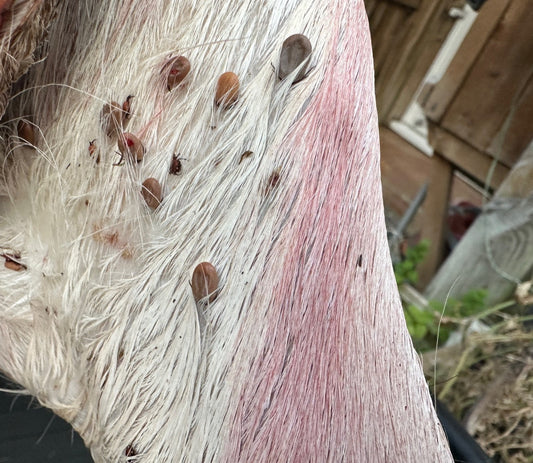The recent announcement of a compulsory deer control scheme on the Loch Choire Estate in Sutherland, enforced by NatureScot, has sparked national debate. The estate, reportedly failing to take reasonable action to control deer numbers, has become the first in Scotland to be subject to such measures.
The move raises a timely question for landowners and managers in England, particularly those operating in the South East: should similar compulsory deer management schemes be introduced here?
It’s a topic that’s gaining traction. With rising deer populations, particularly fallow, causing serious damage to arable land, woodland regeneration, and biodiversity, some argue that government intervention may be the only way to bring consistency and accountability to a sector that often varies widely in practice and ambition.
https://www.gov.scot/publications/section-8-control-scheme-loch-choire-estate/
The Case for Compulsory Deer Management
Addressing Widespread Inaction
Despite the availability of financial support through grants like CWS1 and the PA7 Species Management Plan, some landowners continue to delay or avoid deer control altogether. The reasons vary, limited awareness, lack of local pressure, or simply uncertainty about how to start. However, this inaction carries real consequences. On unmanaged ground, deer numbers can double in just a few years, especially with the seasonal mobility of fallow. When even one estate fails to control deer, neighbouring woodlands and arable fields pay the price.
Protecting Arable Interests
In the South East, where deer frequently move between woodlands and high-value crops, the impact is immediate and financial. We’ve seen firsthand the extent to which fallow deer can flatten a corner of wheat, strip the buds off grapevines, or leave trails through emerging cover crops. For neighbouring farmers, damage from unmanaged herds can equate to thousands of pounds in lost yield per year, yet there is often no mechanism for compensation or enforcement. Compulsory management could begin to redress this imbalance.
Meeting Biodiversity and Climate Targets
Government commitments around biodiversity net gain, climate resilience, and carbon sequestration rely in part on functional woodlands. But woodland can only function if it regenerates, and it simply won’t while deer pressure remains unchecked. Continuous browsing strips the understorey, prevents new trees from establishing and suppresses natural flora. The knock-on effects are profound: without structure at ground level, species like nightingales, dormice, and woodland butterflies lose their habitats. The long-term value of woodland planting, meanwhile, is compromised, costing both public money and ecological potential.
A Level Playing Field
For estates already investing in professional deer control, compulsory management would help level the playing field. Many landowners we work with are meeting their responsibilities, recording cull numbers, and making use of grant funding to do so. Yet they often find themselves undermined by others who do nothing, particularly on adjoining parcels. A standardised, enforceable minimum expectation could go a long way in supporting those already doing the right thing.
The Case Against Compulsion
One Size Doesn’t Fit All
A blanket approach to enforcement risks ignoring the complexities of each estate. Not all landowners face the same pressures. Some parcels, particularly small, enclosed woodlands may support only transient populations. Others may have made habitat decisions based on the presence of deer, accepting a certain level of browsing in exchange for other benefits. Imposing a compulsory model might unfairly penalise those working within a different, but still defensible, land-use model.
Risk of Administrative Overreach
There are also concerns about the mechanism of enforcement. In Scotland, the NatureScot order is based on direct evidence and detailed field data. Replicating this across England would require investment in monitoring, reporting and legal processes, raising questions about who would fund and deliver it. A poorly resourced or inconsistently applied enforcement model risks alienating landowners without improving outcomes.
Public Perception and Access
In areas with high levels of public access, such as the South Downs or the fringes of urban Sussex compulsory culling may create tension with recreational users unfamiliar with deer management. While public engagement and education can mitigate this, a compulsory programme imposed without local consultation may deepen mistrust and hinder collaboration.
A Measured Approach in the South East
At Wildscape Deer Management, we believe most landowners in the South East understand the impact of excessive deer numbers. The visual evidence alone browsed saplings, absent ground flora, crop damage is often enough to trigger concern. Our preference remains for collaborative, informed management supported by grants such as CWS1 (£105 per hectare, per year) and PA7 for plan creation.
We’ve worked with estates where no formal deer control had been in place for years, and within a single season of structured intervention, the results are visible. Tree guards are no longer being thrashed. Wildflowers return. Crop losses fall. It’s a reminder that deer management doesn’t need to be imposed to be effective but it does need to be taken seriously.
Where inaction persists, however, we acknowledge that a conversation around enforceable baselines is worth having. There must be a route for ensuring that estates benefiting from public funding or environmental designation also meet their obligations to protect woodland and farmland. Whether that’s through formal enforcement, cross-compliance on grants, or local accountability mechanisms remains to be seen.
Should England follow Scotland's example with compulsory deer control orders?
Should England follow Scotland's example with compulsory deer control orders? Perhaps not in full, but the issue can’t be ignored. In regions like the South East, where fallow populations are thriving and woodland regeneration is under real threat, it may soon become necessary to apply more pressure on those who continue to avoid responsibility.
In the meantime, there are tools already available, funding, guidance, and professional support, that make proactive deer management achievable. The goal should be consistency, not punishment. And with the right framework, most estates already have what they need to meet that goal.






